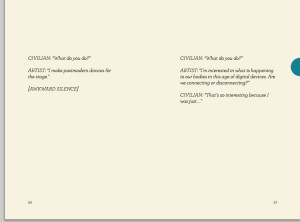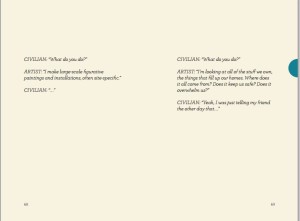Dallas Museum of Art Deputy Director, Robert Stein recently made an argument about the value of museums, and by extension, the arts, as a counter to philosopher Peter Singer’s suggestion that philanthropic giving to the arts means that many more people are fated to remain disabled.
I was actually surprised to learn that Singer is a philosopher because it seemed to me that he was making clearly erroneous assumptions that those giving to the arts aren’t also giving to health and social causes as well. Likewise, it is incorrect to assume that absent the opportunity to give to the arts, all those only giving to that cause would choose to support health and social causes instead.
Indeed, I admittedly always assumed that given the choice between healing the sick and feeding the poor and funding the arts, the sick and poor would tend to win out. The fact Singer was essentially implying arts and culture held a greater allure for philanthropists made me wonder if there were appealing elements of arts and culture I was overlooking and needed to exploit more.
Now just because I find Singer’s approach to be weak doesn’t mean that arts organizations don’t have work to do in communicating their value. Stein’s piece is involved and makes a number of compelling arguments about how arts institutions need to position themselves and their value to the community.
In fact, I have ultimately decided to break up my original post and address different portions of Stein’s piece over the course of two days.
I was most drawn to the following concept:
Consider what could happen for a moment if Museums were able to document — like universities do — our creative alumni? With the technology currently at our disposal, why are we only so focused on patron management systems (CRM by another name) that track the money people donate to us? What if we focused instead on keeping a catalog and evidence of the creative imprint our audiences are exposed to and the impact they make on the world. Such a catalogue could effectively illustrate the museum’s imprint on the formation of creative ideas and creative professionals and their resulting innovation across a multitude of fields. This alumni creativity database could be a proof-text for the role of museums in the formation of creativity and a boon for fundraising linked to this important outcome.
This idea that arts organizations really needed to be assembling a database of cultural experiences as sophisticated as that in a customer relationship management system shook me because really, those experiences are the true assets of our organizations and many arts organizations allow their connection with them to dwindle once they pass.
We cross reference giving and attendance history, know where people like to sit, how they like to be addressed and what their social and professional relationships are. Many arts organizations can pull that information up in moments and spit out a report or mail merged letter tailored to a person’s interest.
But our creative record is often contained in banker boxes and file cabinets that we have to sift through for hours in order to derive any value from it. How many people can pull up the program, images, video, interviews, notes by the creative team/curators and feedback from event attendees in a short period of time?
We make statements about putting the art and artist at the center of our work, but do we really cherish and reflect on what we have done the way a child cherishes a favorite teddy bear and the way an adult wistfully remembers that teddy bear? Or is the work filed away alongside expense reports and tax returns and only pulled out for grant reports and anniversary displays?
Near the end of his piece Stein says,
Only by measuring and counting the difference we make in people will we live up to our potential to change lives. Without it, we risk being relegated to the periphery of contemporary society as mere treasure houses for the wealthy in need of a tax-break.
If we give up on the idea that we can know for sure that our museum makes a difference, then Peter Singer is right, we’re not worth supporting.
He is referring to a commitment to investigating the impact work on outsiders that experience it. But it occurs to me that there might be an element of “if you want someone to love you, you must first love yourself,” in all this. Maybe only by making the totality of our creativity, past and present, central to our focus can we really convince the world of our organization’s value to them.

